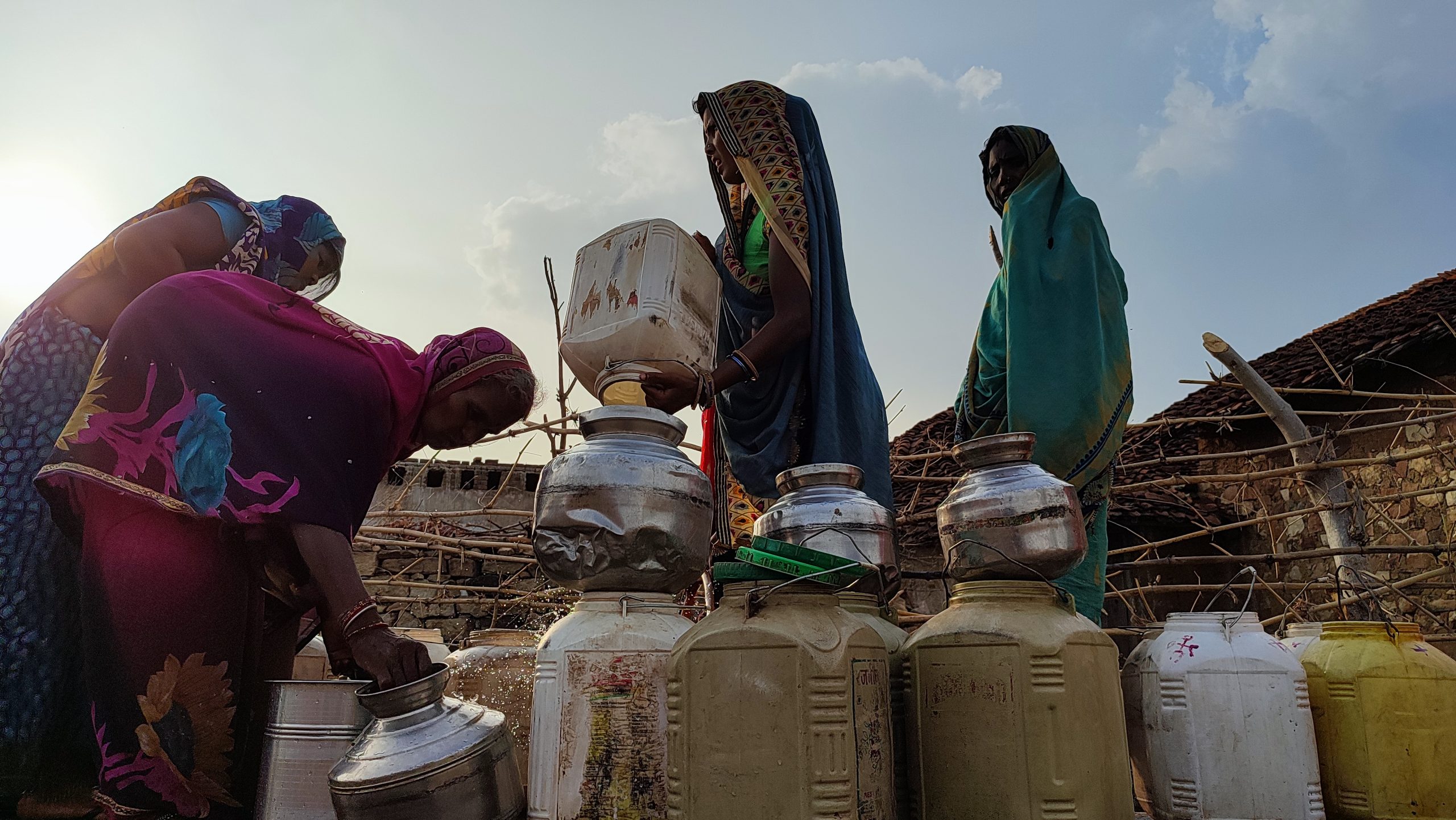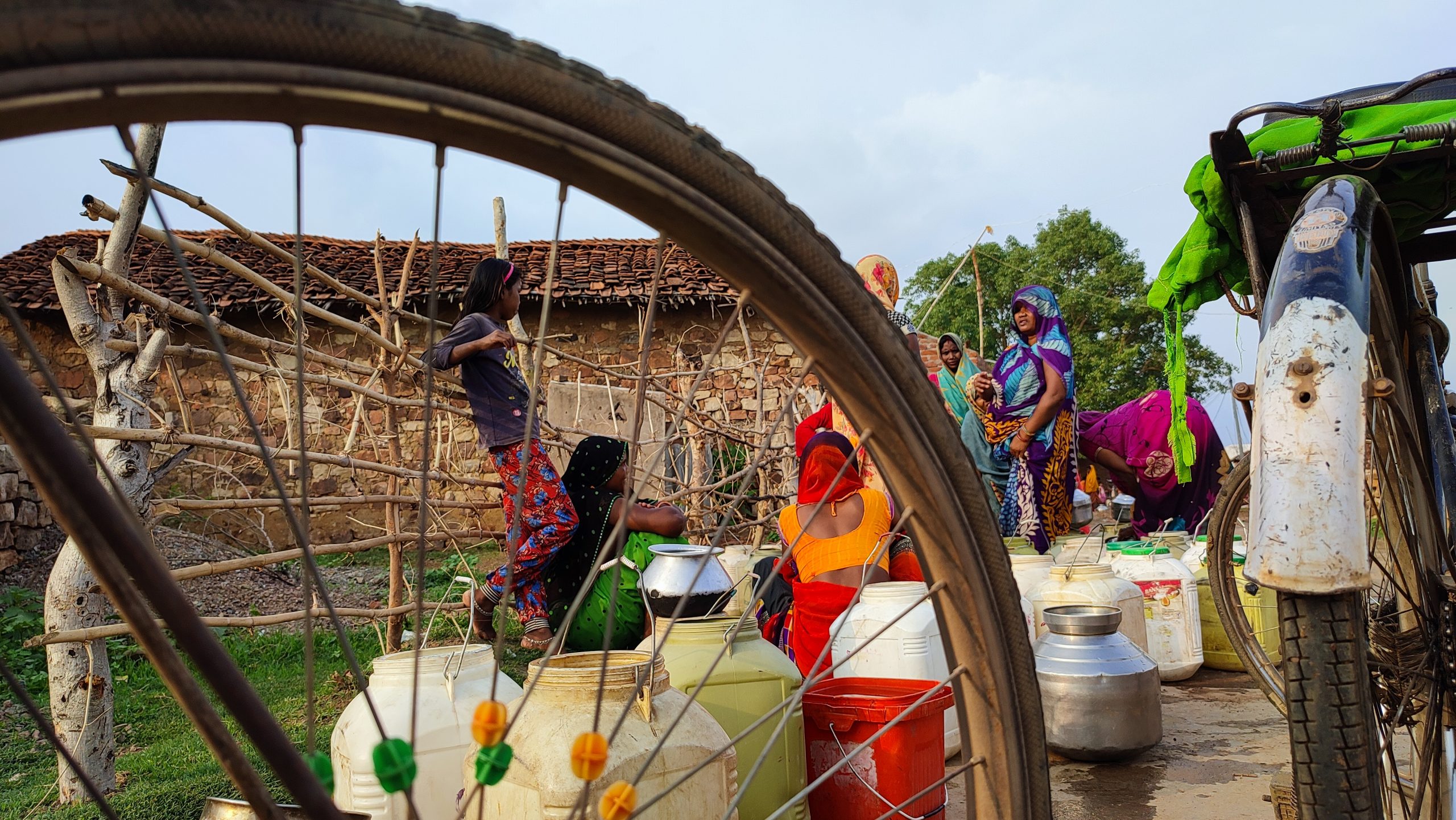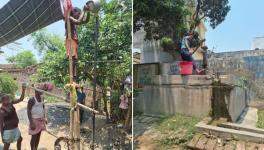Women Bear the Brunt of the Water Crisis
While the pandemic has made regular handwashing a mandate, these villages barely have sufficient drinking water. KUMAR DIVYANSHYU reports from Panna district in Madhya Pradesh and Chitrakoot in Uttar Pradesh.
WHILE the entire world is taking extra precautions to keep Covid-19 at bay, the residents of Kudakpur village in the Panna district of Madhya Pradesh are struggling just for sufficient drinking water every day.
Anita Devi arrives at the village water pipe at five in the morning without delay. She carries every empty vessel—bucket, utensil, and what-not—in her house to fetch water in.
“If I am late, I would be last in the queue to fetch water. The entire village comes here for water, carrying every possible container you can think of,” 34-year-old Anita tells The Leaflet. “It is a 15-minute walk from home and a 25 minute-return carrying the water,” she says.
The situation in Anita’s village in Panna has been the same for the past six or seven years. The residents rely on hand pumps and a well during the monsoons. But even before summer arrives, those water bodies completely dry up. Then the village depends on the limited water supply.
“We get water supply twice a day, for one hour at 5:30 in the morning and then at four in the evening. We have aligned our daily chores accordingly. Every day, these two hours are very crucial to us,” says Anita.
Also read: Bihar: No Food or Cooking Fuel, Flood Victims Struggle for Survival on Rooftops, in Tractor-Trolleys
Anita lives with her husband and three children in Kudakpur. This family of five depends on the water she fetches from the hand pump located a kilometre away from their house until March and in the first few days of April. As the temperature rises, the water levels decrease, and Anita must walk a further half-kilometre to find water.

According to Women for Water, the United Nations Sustainable Development Goals have three dedicated goals for “Gender Equality”, numbers 5, 6 and 13, which correspond to clean water, sanitation, and climate action. Each of these goals also connects to the management of water.
As in Panna, water scarcity is a common issue throughout the year in several villages in the Bundelkhand region. The crisis peaks from April to July. These are the effects of climate change, which has hastened the arrival of summer and delayed monsoon arrivals.
The situation is not very different in the Chitrakoot district of the Banda region of Uttar Pradesh. Here, Lodhwara village resident Sumati Yadav pays Rs.50 for four buckets of water she gets from a neighbour. The 49-year-old lives with her three daughters, a son and her husband, who returned from Surat following the first national lockdown.
“In the summer, our hand pump dries up and we have to get water from the neighbour who has a borewell. Earlier, they used to take Rs.40 from us, but now they have hiked it. What can we do—we need water to survive,” Sumati says.
Sumati fetches four buckets of 20 litres every day for Rs.50, which means the family of six lives off 80 litres a day. That is 13.3 litres per capita per day, against the norm of 55 litres per capita per day under the Jal Jeevan Mission.
Also read: Water in Crisis: Women in India
Sumati takes her daughter along to fetch water. “Both of us carry two buckets each,” she says. “You see, since we barely have drinking and cleaning water, we defecate in the jungle. When there is no water, what would there be a toilet for?” she asks.
‘People in the cities are advocating handwashing, but what about us? Do they know we cannot even get enough drinking water?’ says Sumati. ‘Most residents of our village defecate in the open,’ she says.
A study by the Uttar Pradesh government says that India accounts for 16% of the world population but only 4% of the freshwater resources. Based on the 2011 Census, the projected per capita water availability was 1,545 cubic metres for 2015 against the global average of 1,700 cubic metres, thereby indicating the water stress level of the country.

“If we talk about the water crisis, besides an environmental issue, it is even a gender issue. For the most part, fetching water is considered the job of women. Like women, girls are also supposed to fetch water, which increases their share of work,” says Shishir Chandra, Programme Coordinator (North India) for Water Aid.
Also read: Why is fetching water considered a ‘woman’s job’?
“With the kind of lifestyle we have adapted, we have lost the balance between temperature, air and water. The climate of Bundelkhand climate is different from many parts of the country. It needs to have a good, heated summer of 40 days, a good monsoon lasting up to 40 days and a 40-day winter, ideally. But we know that is not happening. We have to realise how all of this is interconnected,” says Prem Singh, an organic farmer for the last 30 years, who founded the NGO, Human Agrarian Centre in the Banda district.
The article was originally published in The Leaflet.
(Kumar Divyanshu is an independent journalist who likes to capture rural issues. The views expressed are personal.)
Get the latest reports & analysis with people's perspective on Protests, movements & deep analytical videos, discussions of the current affairs in your Telegram app. Subscribe to NewsClick's Telegram channel & get Real-Time updates on stories, as they get published on our website.
























